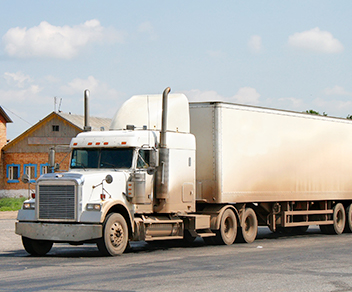
09 Jul The Cost of Dirt…
In times like these when the economy and budgets are tight, of one of the first steps often taken toward cutting costs is reducing or eliminating equipment-wash programs. The true cost of dirt is an important factor to contemplate before taking these measures.
For example, soil and debris buildup on mechanical components insulates heat-sensitive components and shortens their life; promotes electrical shorts and vehicle fires; creates acids that erode finishes, base materials and electric components; accelerates wear and abrasion and shortens lubrication life.
Effects on your equipments’ paint and metal finish many include a breakdown in the chemical structure of paint surfaces, reducing paint life; promotes scratches and scuffing due to the abrasive effect; and require more frequent refinishing- potentially doubling the cost.
Cutting back or reducing equipment washing also encourages more frequent Department of Transportation inspections- which can impede timely deliveries or service, reduces your employees’ pride in their work, increases time required for tasks, promotes dirt and dust contamination of equipment, and reduces the ability to effectively diagnose mechanical issues. Additionally, it also creates higher maintenance costs, discourages third-party repair facilities from working on your fleet, impedes your ability to collect warranty, affects the quality of preventative maintenance inspections, and affects your ability to hire competent drivers and technicians. And that is just within your shop.
The perception of your organization can also decrease since your fleet is your billboard and primary form of advertising. It can even have a negative impact on your negotiating ability, meaning a poor overall perception of your fleet in the community which equates to a negative impact on pricing.
Dirty equipment can affect your ability to recruit good drivers, imparting an ‘I don’t care” attitude throughout the driver ranks. It can foster an unsafe working environment, reduce the quality of communication between operations and maintenance and create additional employee turnover.
All this reduces the value of your assets – decreasing return on capital – causing negative vehicle residual value- affecting confidence and contributing to higher fixed and variable cost structure.
Finally, dirty equipment has an effect on safety. Why?
- Dirty light fixtures provide less headlight range and tail/brake/running light illumination. Reduced headlight range, even a few percent means it’s harder to see road debris as well as other conditions. The resulting tire damage and suspension wear increases accident risk.
- Dirty windshields reduces the ability to see and react to road conditions there is more glass wear when wipers are used to clear dirt, leading to wiper abrasion and distorted views.
- Dirt and grease buildup on steps, frame rails and grab handles increases the changes of slip-and-fall accidents.
- Dirt and grease buildup also can interfere with proper operation of hitches and doors, leading to accidents and injuries.
Can you put a quantifiable figure on what it costs if your fail to implement an effective equipment image wash program? The answer is “yes.” Taking into account what a wash program will cost the organization, not having one will increase your equipment costs a minimum of 25%, The key to have such a program is to manage it in the same manner you do the other important aspects of the business. Why what is your cost of dirt?
How you do anything, is how you are perceived to do everything. If the fleet is clean the perception will be that your organization is a well managed with a strong attention to detail.
MCB Fleet Management Consulting is the foremost provider of fleet management, procurement, litigation and safety consulting services to private, public, corporate and governmental fleets. https://mcbconsulting.com
An abbreviated version of this article appeared in Transport Topics- November 30, 2009. https://www.ttnews.com/articles/opinion-wrench-turns



